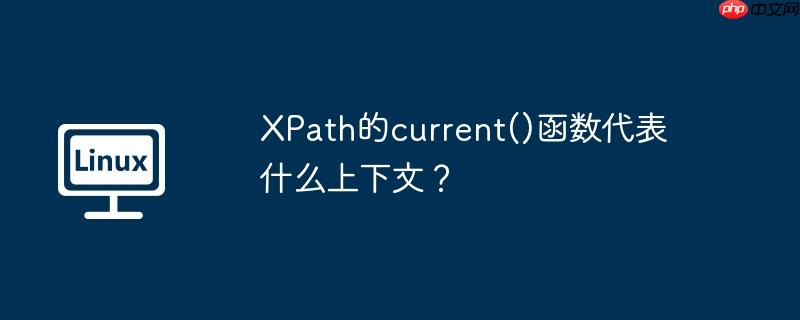current()函数常用于谓语中引用当前节点、XSLT转换、避免上下文歧义等场景,如//book[author = current()/@title]可匹配作者名等于当前书籍标题的节点,确保在复杂表达式中准确指向当前上下文节点。

XPath 的
current()
XPath
current()
current()
current()
在谓语中使用 current()
current()
<books>
<book title="The Lord of the Rings">
<author>J.R.R. Tolkien</author>
</book>
<book title="The Hobbit">
<author>The Hobbit</author>
</book>
<book title="Pride and Prejudice">
<author>Jane Austen</author>
</book>
</books>XPath 表达式如下:
//book[author = current()/@title]
这个表达式会找到
<book>
<author>
<book>
title
在函数内部使用 current()
current()
current()
在 XSLT 转换中使用 current()
current()
current()
避免歧义: 在复杂的 XPath 表达式中,可能会出现歧义,导致 XPath 引擎无法确定当前上下文节点。
current()
for-each
current()
总的来说,
current()
current()
正确使用
current()
在错误的上下文中使用 current()
current()
current()
混淆 current()
.
.
current()
.
current()
current()

技术上面应用了三层结构,AJAX框架,URL重写等基础的开发。并用了动软的代码生成器及数据访问类,加进了一些自己用到的小功能,算是整理了一些自己的操作类。系统设计上面说不出用什么模式,大体设计是后台分两级分类,设置好一级之后,再设置二级并选择栏目类型,如内容,列表,上传文件,新窗口等。这样就可以生成无限多个二级分类,也就是网站栏目。对于扩展性来说,如果有新的需求可以直接加一个栏目类型并新加功能操作
 0
0

在不需要使用 current()
current()
./price
current()/price
在 XSLT 中与 .
current()
.
xsl:for-each
current()
xsl:template
xsl:for-each
.
一个更具体的例子:
假设你有一个 XML 文件,表示一个学生列表,每个学生都有一个姓名和多个课程。你想要找到所有选修了 "Math" 课程的学生,并且他们的姓名以 "A" 开头。
<students>
<student name="Alice">
<course>Math</course>
<course>English</course>
</student>
<student name="Bob">
<course>Science</course>
<course>History</course>
</student>
<student name="Amy">
<course>Math</course>
<course>Science</course>
</student>
</students>以下 XPath 表达式使用了
current()
//student[course = 'Math' and starts-with(current()/@name, 'A')]
在这个例子中,
current()
starts-with()
<student>
name
name
current()
current()
current()
position()
last()
id()
position()
last()
position()
last()
current()
id()
id()
current()
id()
current()
.
.
current()
current()
总的来说,选择哪个函数取决于你的具体需求。 如果你需要引用当前节点本身,那么
current()
position()
last()
id()
理解这些函数的区别可以帮助你编写更简洁、更有效的 XPath 表达式。
以上就是XPath的current()函数代表什么上下文?的详细内容,更多请关注php中文网其它相关文章!

每个人都需要一台速度更快、更稳定的 PC。随着时间的推移,垃圾文件、旧注册表数据和不必要的后台进程会占用资源并降低性能。幸运的是,许多工具可以让 Windows 保持平稳运行。

Copyright 2014-2025 https://www.php.cn/ All Rights Reserved | php.cn | 湘ICP备2023035733号